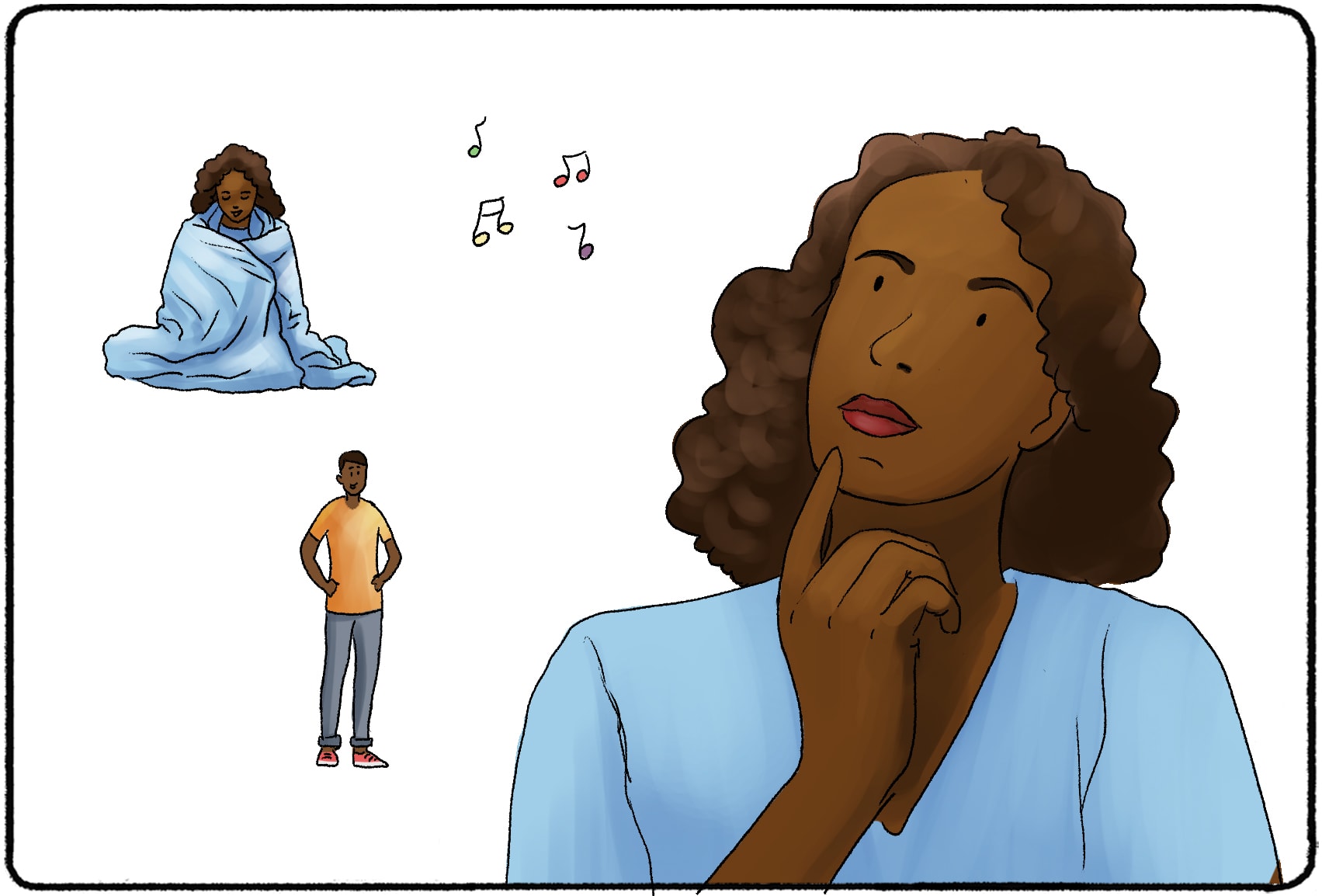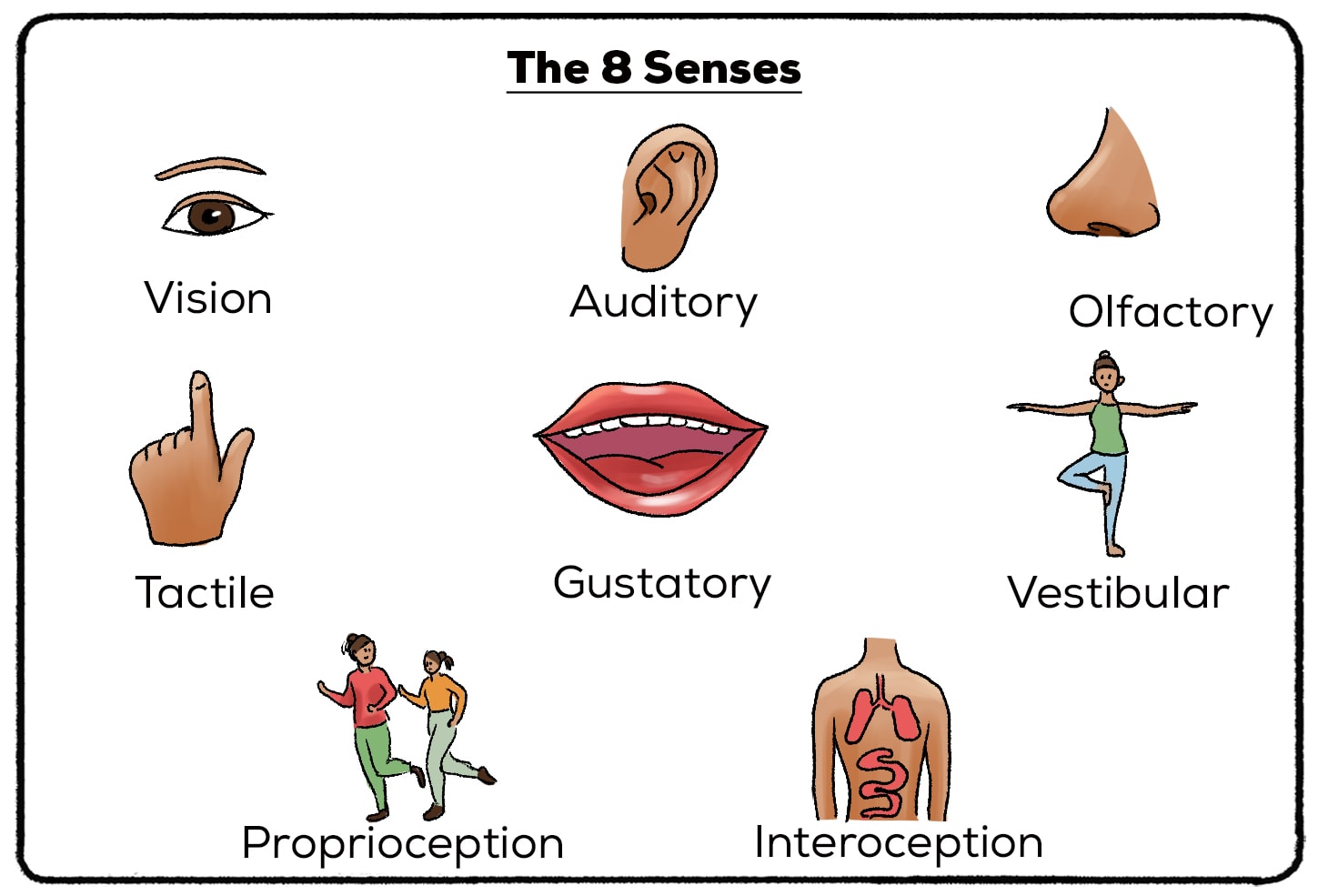Think about the memory of your first prom. Or a day at the park with your dog. Or a joke that your friend made the other day.
The memories that stay in our long-term memory storage stuck out to us for a reason. The things that we saw, felt, or heard were significant and worthy of being remembered. They made the cut.
We see, feel, and hear a lot of things throughout the day. We take in many, many pieces of information every millisecond.
As you begin to learn more about how memory works, you know that not all of these pieces of information make it very far into our memories. They go through different levels of memory storage to make it to the long-term memory.
What is Sensory Memory?
Also known as the sensory register, sensory memory is the storage of information that we receive from our senses. Examples of Sensory memory include seeing a dog, feeling gum under a chair, or smelling chicken noodle soup. Our eyes, nose, and nerves send that information to the brain.
Before memories go into short-term memory storage or long-term memory storage, they sit in sensory memory storage. Sensory memory may be accurate, but it is very briefly in our minds before it is stored. There are many different types of sensory memory. While some types of sensory memories stick in our minds for up to four seconds, other disappear within milliseconds. It’s up to the brain to decide which of these memories moves onto working memory and later, long-term memory.
Where Does Sensory Memory Come From?
From our senses! Think of sensory memory as pieces of data that explain the world around us.
How does data travel from our eyes or ears to our sensory memory? The process is slightly different depending on which sense is collecting information. Fortunately, if you've got questions, I've got answers.
Vision: Sensory information is picked up first through multiple layers of the retina. By the time it reaches the optic nerve, that sensory information has transformed from light to electrical signals. The optic signal is the connecting piece between the eye and the brain. Electrical signals are finally processed in many areas of the brain like the thalamus and visual cortex.
Hearing: This process mirrors the path that visual information takes from the eyes to the visual cortex. Of course, the eyes are not involved in hearing. The ears pick up vibrations and convert that information into electrical signals in the Organ of Corti. Then, the signals travel through the cochlear nerve and to the auditory canal and cortex.
Touch and Balance: (Yes, balance is a sense!) The ear needs mechanoreceptors to pick up on sensory information. This type of receptor cell is also important in collecting information about touch and balance. Touch receptors are found all over the body!
Taste and Smell: Did you know we process taste and smell at the same time? Taste begins at the taste buds, which contain receptor cells much like a layer of the retina or layer of the inner ear that picks up sensory information. As we chew, our food breaks down and gaseous particles enter our olfactory receptors. This information is converted again and travels through the facial nerve, vagus nerve, and glossopharyngeal nerve.
Sensory Information and COVID
One of the most bizarre symptoms of the Coronavirus is the temporary loss of taste and smell. Researchers are still trying to understand this, but they believe that cells that support olfactory neurons are damaged when COVID enters the body. Olfactory neurons are not directly affected, as they are when attacked by other viruses. If you lose your sense of smell while experiencing COVID symptoms, you're likely to get it back.
Is Sensory Memory Unlimited?
In terms of capacity; seemingly, yes. In terms of duration; no. Sensory memory only lasts for about a second. Unless the brain decides to move that information along to short-term memory storage, however, the information is lost forever. (Or until you feel that gum under your chair again.)

How is Sensory Memory Encoded?
Sensory memories become memories in our brain through a process called encoding. There are three types of this encoding: visual encoding, acoustic encoding, and semantic encoding. Seeing an image in your mind, like the Adidas logo or the image of your favorite album cover, is the result of visual encoding. Having a tune stuck in your head is the result of acoustic encoding. And any impact, feelings, or context that connect these visual and acoustic memories is the result of semantic encoding.
Experiments with Sensory Memory
How do we know the length of sensory memory? A cognitive psychologist named George Sperling helped us find the answer.
In the 1960s, Sperling produced an experiment to test sensory storage and memory. He each participant a viewfinder. In the viewfinder, participants would see three rows of letters for just 1/20th of a second. In the blink of an eye, the letters were gone.
Then, Sperling ran a bell that indicated to participants that they needed to recite the top, middle, or bottom row of letters. Sometimes, this bell went off within 1/4th of a second after the letters disappeared. Other times, the bell went off a second or two after the letters disappeared.
Sperling found that the letters stuck in the participants’ memories long enough if the bell rang within 1/4th of a second. Once a second or more had passed by, the participants lost the memory of the letters. Sensory memory moves fast.
Why? One theory is that sensory storage is limited. We know that working memory, or short-term memory, is quite limited. Unless things are committed to long-term memory fast, they will go away. This rings true for sensory memory as well. Our eyes, ears, etc. are constantly taking in new sensory information. When new information comes in, something has got to go.

There Are More Than Five Senses
Before you started watching this video, you could probably guess that sensory memory had to do with the senses: sight, sound, smell, taste, and touch. In reality, there are many more senses than just the five we are taught in grade school. Proprioception, for example, is the awareness of our bodies in space. Our sense of balance is also another sense that is often forgotten in textbooks and classroom discussions.

All of these different senses contribute to our overall sensory memory. But I’m not going to dive into all of the types of sensory memory that have to do with proprioception, nociception, etc. I’m just going to talk about three main types of sensory memory: iconic memory, echoic memory, and haptic memory.
We say that sensory memory lasts for one second, but that’s not the whole story. Each different type of sensory memory may stick around for a longer or shorter period of time.
Iconic Memory
George Sperling’s early experiments tested participants on what they saw. Seven years after his experiment, a psychologist named Ulric Neisser said that this quickly-fading memory storage was iconic memory. Ionic memory is the memory of the things we take in with our eyes.
Iconic memory doesn’t stick around for very long - most iconic memories disappear within ½ second. It can last just milliseconds and then what we have seen is “gone forever,” or at least until we see it again. Our eyes typically have the ability to scan the same item over and over again, so this quick rate of disappearance is not usually dramatic or significant.
This quick rate of disappearance could contribute to the ideas of inattentional blindness and our ability to “not see” things that are right in front of us.
Echoic Memory
Iconic memory moves fast compared to echoic memory. Echoic memory is the storage of auditory information. The sounds we hear go into our echoic memory.
Echoic memory lasts a bit longer than iconic memory - some sounds will stay in echoic memory storage for as long as four seconds. Why? Evolution may be the answer.
Echoic memory is also unique in that the brain can store more than one piece of auditory information at a time. If you are having a conversation with a friend and suddenly hear a lion in the distance, your brain will be able to hold both pieces of information until they disappear or move into short-term memory.
Haptic Memory
The last type of sensory memory I’m going to mention in this video is haptic memory. Haptic memory is the storage of information about the things that we touch and feel. These memories will only stay in sensory memory storage for two seconds - so they last longer than iconic memory, but not as long as echoic memory.
Sensory Memory Can Mess With You!
As you've read this article, you've probably recalled sensory memories that have stuck with you - for better or for worse. This Reddit post discusses some of the most vivid, frustrating, and impactful sensory memories that users have:
Memories of Food
"I have plenty of food issues, and most of them are there because I can't handle certain textures at all, but certain odors tastes can be as difficult. There are stuff that I only experienced once, as a child or as a teenager, and to this day the memory of the sensation is clear and makes me uneasy. On the other hand, maybe because my SPD also presents itself in the form of craving stimuli, I also have fond and very detailed memories of certain touches, down to how deep was the pressure, how long it lasted, etc, even woth some of those memories being 20+ years old."
"I also experience very vivid sensory memories! Like if I have a bad texture experience with a food I’ll often years later remember exactly how it felt whenever I look at that food. It very nearly ruined avocados for me! I can also still remember the precise sounds, feelings, and smells I used to struggle with at the orthodontist as a kid. 😂"
New Environments
"I actually just moved into a new house and different things about it, the feel of the carpet, the way the AC makes the air taste/feel, the color scheme of the rooms. It’s like mini flashbacks all over the place. It’s been interesting, if a little disconcerting, trying to nail down all the various input/nostalgia going on around me as I adjust to the house."
Nails on a Chalkboard (Or Living Room Wall)
"When I was a kid I once scraped my nails along the living room wall, and I never did it again after that. The texture of the wall scraping along my nails was awful, and I can still imagine exactly how it felt. Just thinking about it makes me want to rip my nails off and yeet them into the sun."
Of course, there are things that we feel, hear, and see that we will remember forever. These pieces of information have made it past sensory memory into short-term and long-term memory storage. But before we make memories that last for life, we have to store and process information in the sensory memory storage.
